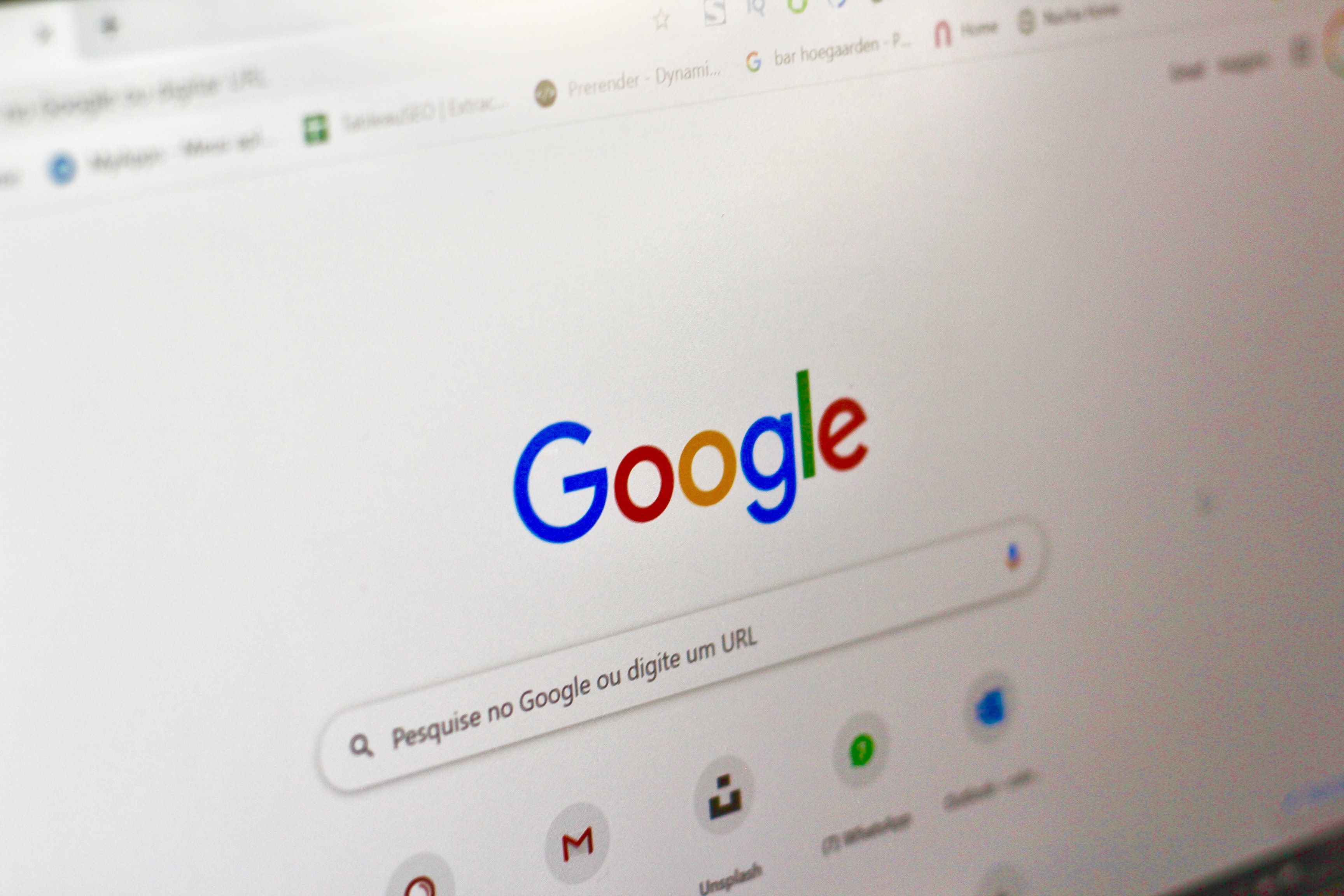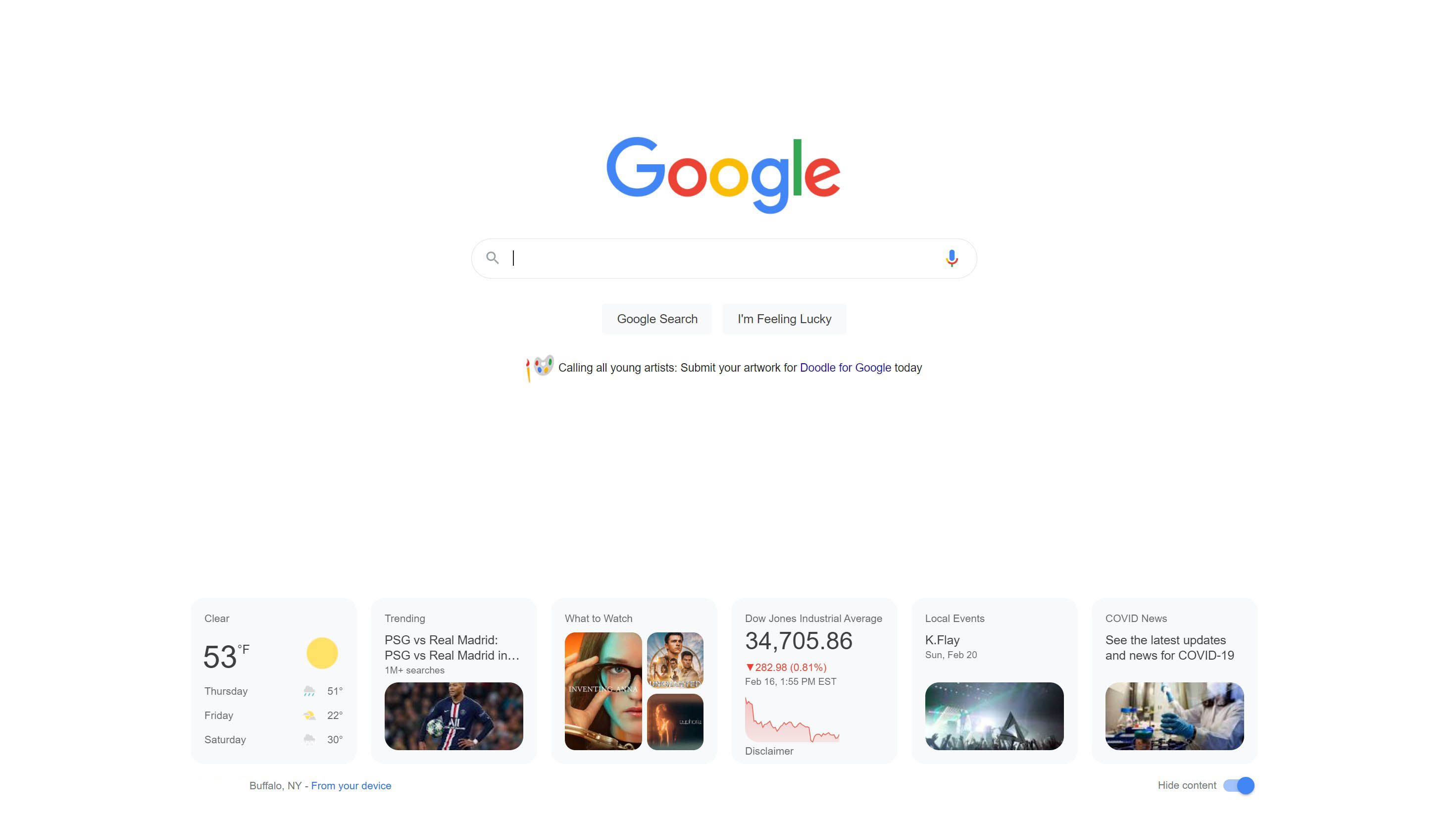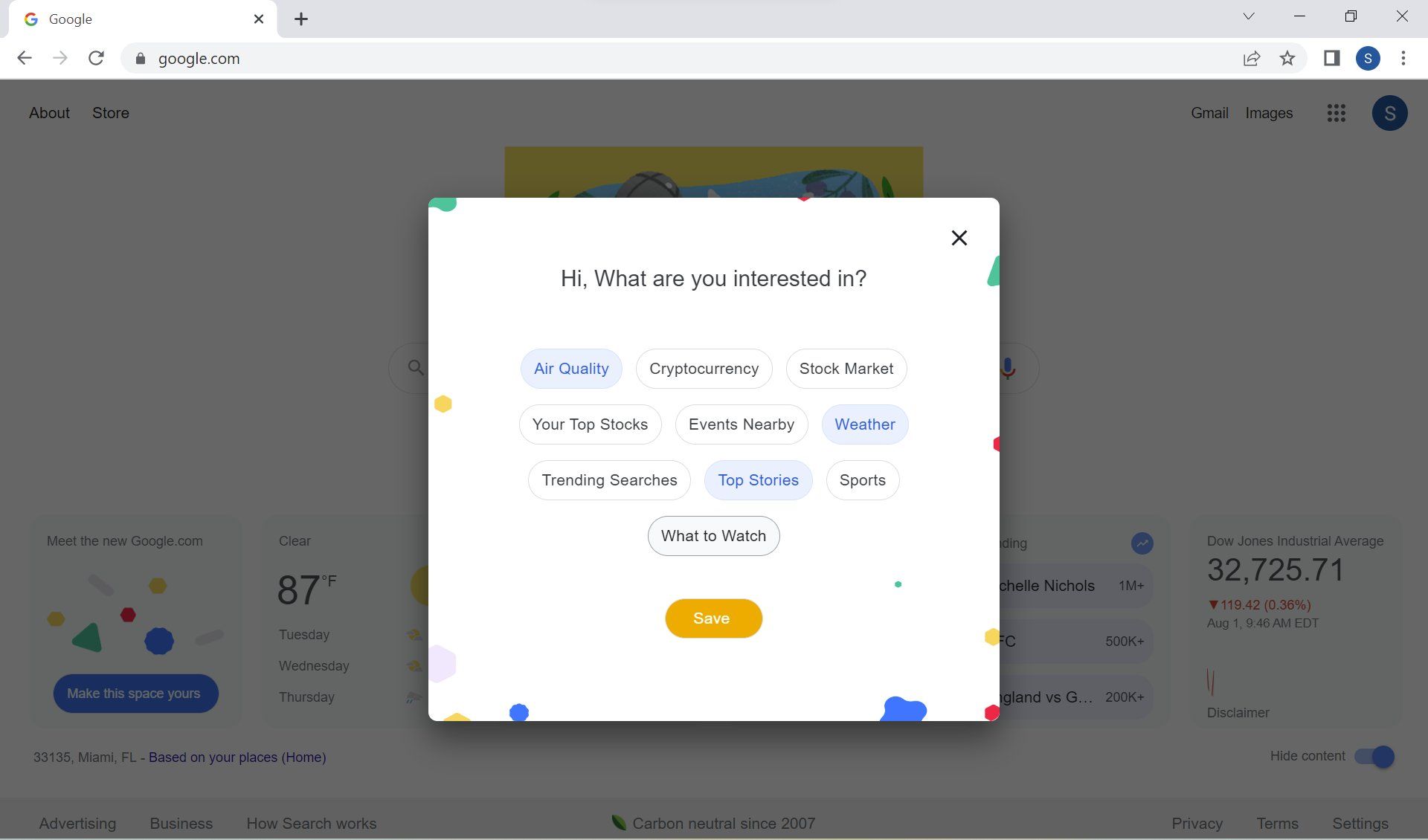Google’s default page for Search on the web is intuitive and simple to use. It has a prominently-placed search bar and options to access the page in different languages or switch to another Google service. Although some of us appreciate the clean and simplistic look, Google periodically feels the itch to change the design and use the blank space for other purposes. In February, we saw Google go a step further and add contextual cards to the homepage. A few people say they are seeing these cards again now, indicating a possible wider rollout.
Earlier this year, we reported on six card-shaped widgets appearing at the bottom of the Search homepage for some people. Each widget gave you information about things you could look up, such as Weather, Trending, What to Watch, Stocks, Local Events, and COVID-19 News. The cards expanded when you hovered your cursor over them, but a toggle allowed you to hide them completely if you preferred. The cards were visible on the homepage for a few days before they disappeared.
Google’s test in February showed six new cards on the homepage
Based on recent tweets, 9to5Google reports the cards are making a comeback, accompanied by a new floating prompt titled “Meet the new Google.com.” You are prompted to sign in and unlock customization of the homepage widgets, which are now squares instead of rectangles some people reported seeing in February. Upon signing in, a separate window opens up and allows you to pick from cards about the following topics:
- Air Quality
- Cryptocurrency
- Stock Market
- Your Top Stocks
- Events Nearby
- Weather
- Trending Searches
- Top Stories
- Sports
- What to Watch
Interestingly, the card widgets we saw in February were squarish (not rectangular like some reports claim). Google has also made some tweaks to the experience since we last saw it — the number of cards added seemingly depends on the size of your screen, and there is no way to scroll horizontally or vertically to see the rest of them.
Since very few people reported seeing the new homepage experience in February, and we don’t see them on our devices yet, we believe this is a classic a/b test to determine how users respond to the change. However, such tests usually foreshadow a wider release.



